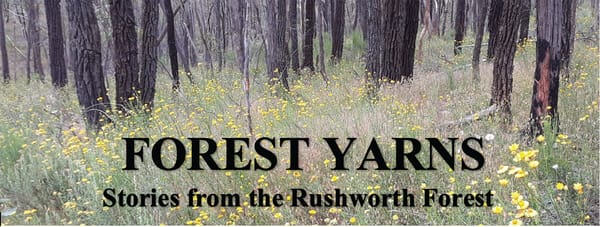The majestic mountain ash

The mountain ash (Eucalyptus regnans) is not an endangered species; it is actually doing quite well. What is rare are the mature mountain ashes. They are big…very big and are considered by many to be the biggest living organism on the planet. They are certainly the tallest flowering plants; growing to around 90 metres or more with a trunk that is a good 2.5 metres in diameter at breast height. Seeing one of these giants fills you with awe. They are fast growing and typically live for more than 120 years with the oldest example known being 500 years old. They grow in the sub-alpine temperate regions of Victoria and Tasmania and have been extensively logged for their strong, straight-grained hardwood.
When a mountain ash dies and falls it triggers a race for the sky as hundreds of seeds germinate in the vacated space. Only one or two saplings, the strongest and fastest growing, will survive to maturity. Mature trees that become taller than the surrounding canopy are vulnerable to having their tops blown off either by wind of lightning strikes. As a tree ages it becomes hollowed out. The hollows provide shelter for many species also make trees susceptible to fire which can bring them down. Trees can also topple in wet years if the soil becomes waterlogged. Stands of mature trees only occur in old-growth forests (never logged). The only old-growth mountain ash forest left in Victoria is the Erinundra Plateau. Now a national park it was the centre of anti-logging protests in the 1980s.
A glimpse of what these majestic forests were like can be seen while walking through forests that were logged prior to the mechanisation of timber production. The trees have grown to be quite big and there is a healthy and varied understory of tree ferns and other shrubs. Dotted throughout are the massive stumps. These are three or four metres tall, with the notches cut to hold the boards that the foresters stood on still clearly visible. The trees were cut high to avoid their basal hollows. A two-man crosscut saw was used. It was a hard and dangerous job.
The mechanised practices of post-World War 2 saw a very different type of forest develop. The coups were clear felled. Anything that was not a saw log was bulldozed into rows and burnt. The churned-up coup would then be seeded (often from the air). The resulting forest was a monoculture of ash trees which were harvested on a 60-70-year cycle. Without the hollows of mature trees and a depleted understory, these forests are largely devoid of wildlife.
There are some rare, isolated mature mountain ash trees. Some are well known, others are ‘secret’. One of the better known is the Standing Giant in Mount Worth NP. Even these trees are endangered. As more people visit a tree, the soil around its base becomes compacted. At some trees a boardwalk has been built around the base of the tree to prevent this. Another danger comes from visitors bringing in fungal spores on their boots. The introduced cinnamon fungus is of particular concern. While mountain ash can survive forest fires quite well, it is expected the increased frequency of forest fires due to climate change will have a significant impact on them.
Sadly, there are several old mountain ash stumps with signage claiming that the tree was the tallest tree in the world.










